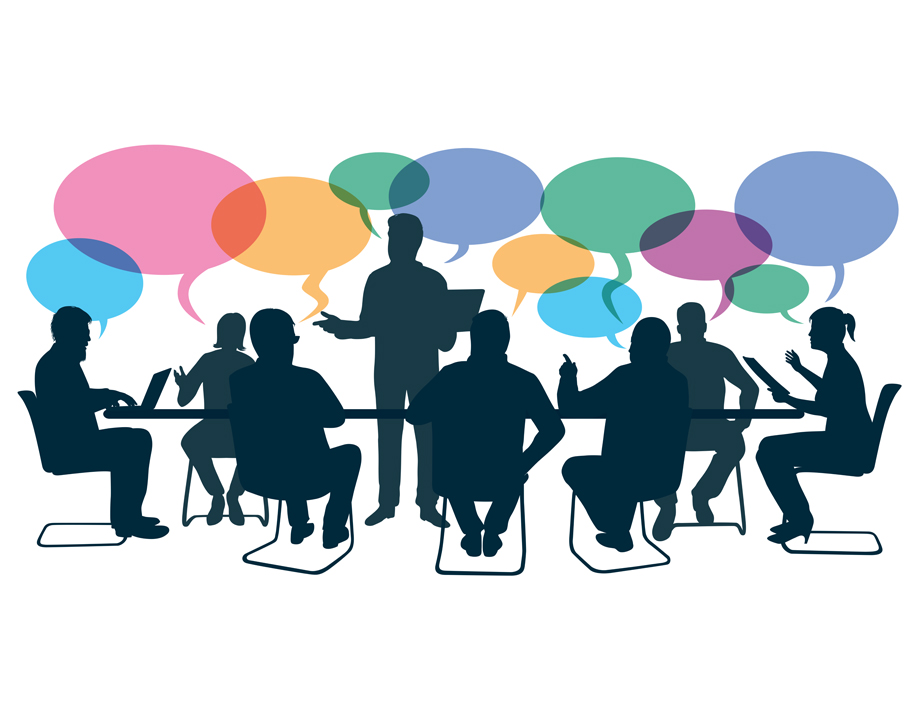How to Have Constructive Work Conversations
How to Have Constructive Work Conversations


In a constructive conversation, important changes take place as each participant works to understand the others’ viewpoints. This can be challenging in the workplace.
Not every talk you have with your teammates will have a good—or even reasonable—outcome. But good ones can lead to change, as well as better understanding. They also can make great strides toward getting everyone on the same page, said Keith Collins, a human resources coordinator at the United Business Technologies Inc., a telecommunications contractor in Cedar Rapids, Iowa.
A productive dialogue addresses problems in a constructive, empathetic way, he added.
Employees who genuinely want to understand another’s viewpoint and to listen to others’ views are the best situated for constructive conversations. These conversations are free from negativity. All the parties who participate feel heard and feel as though they’ve been helped, Collins said.
They are important because they maintain a positive relationship between everyone speaking, yet they address differences between them. Poor approaches to communications can exacerbate problems, he added.
Of course, holding a conversation that results in understanding and problem solving is easier said than done. If you need to brush up on your skills for holding a productive dialogue—or want to learn new ones—these five tips can help.
This will not only help you think on your feet at a time when you may be nervous, it will help you better understand another’s goals for the conversation. After all, if you can anticipate their reaction, perhaps you have a good idea of where it might be coming from, Collins said.
He learned the “yes, and” skill in his first class and has put it to work in his more than five years of improv classes and performances.
When someone states a need or a fact, say “yes” to acknowledge that you’ve heard them and that they are likely correct. Then follow it with the word “and” before expanding on their thought or adding a suggestion of your own. This is how conversations naturally build and play off each other; how each party feels heard, Mott said.
Become A Member: How to Join ASME
For example: "Yes, I hear what you mean about the project delay being potentially deadly for profits. And I think we can put our heads together to come up with one of two ways to speed the project’s schedule or minimize how a delay would affect the project."
By settling yourself ahead of time, you’re more likely to stay calm during the conversation and to let go of trying to control others’ reactions. You can only control your words and your tone and delivery, Weeks said.
A conversation becomes more constructive when you think of it as a normal conversation rather than a difficult talk, Weeks said.
But, Weeks stressed, remember that not every work conversation will be constructive or result in moving forward or in change. With these five tips in your back pocket, however, more of your workplace dialogues will result in fruitful and rewarding results.
Jean Thilmany is a science and technology writer in Saint Paul, Minn.
A productive dialogue addresses problems in a constructive, empathetic way, he added.
Employees who genuinely want to understand another’s viewpoint and to listen to others’ views are the best situated for constructive conversations. These conversations are free from negativity. All the parties who participate feel heard and feel as though they’ve been helped, Collins said.
They are important because they maintain a positive relationship between everyone speaking, yet they address differences between them. Poor approaches to communications can exacerbate problems, he added.
Of course, holding a conversation that results in understanding and problem solving is easier said than done. If you need to brush up on your skills for holding a productive dialogue—or want to learn new ones—these five tips can help.
Prepare in Advance
Think about how you’d like the conversation to go ahead of time, Collins said. Gather your facts, but recognize that what you consider a fact may not meet another person’s definition of an observable truth. Try to anticipate others’ viewpoints and protestations in advance to be better prepared for how you will handle them.This will not only help you think on your feet at a time when you may be nervous, it will help you better understand another’s goals for the conversation. After all, if you can anticipate their reaction, perhaps you have a good idea of where it might be coming from, Collins said.
Yes, and
Take a tip from improvisational comedians, who are well skilled in thinking on their feet. “Improv is all about letting go of where you want the conversation to go or where you think it’s going to head,” said Randy Mott, an improv performer in Minneapolis.He learned the “yes, and” skill in his first class and has put it to work in his more than five years of improv classes and performances.
When someone states a need or a fact, say “yes” to acknowledge that you’ve heard them and that they are likely correct. Then follow it with the word “and” before expanding on their thought or adding a suggestion of your own. This is how conversations naturally build and play off each other; how each party feels heard, Mott said.
Become A Member: How to Join ASME
For example: "Yes, I hear what you mean about the project delay being potentially deadly for profits. And I think we can put our heads together to come up with one of two ways to speed the project’s schedule or minimize how a delay would affect the project."
Be Calm
Regulate your breathing and find a place of empathy and seek clarity about what you want to say. This will also help you get honest with yourself about where you ideally want the conversation to go, said Holly Weeks, author of Failure to Communicate: How Conversations Go Wrong and What You Can Do to Right Them.By settling yourself ahead of time, you’re more likely to stay calm during the conversation and to let go of trying to control others’ reactions. You can only control your words and your tone and delivery, Weeks said.
A Better Frame
Sometimes, conversations can take a constructive bent when you frame them—either inside your head or to others—in a different way, Weeks added. For example: You’re not having a hard talk with an employee about their performance, you’re giving them suggestions that can help with their personal development. Or, the engineering design wasn’t bad, you’re suggesting ways it could be even better.A conversation becomes more constructive when you think of it as a normal conversation rather than a difficult talk, Weeks said.
Map Out Next Steps Right Away
At the end of the conversation, ask group members what they feel next steps should be. You might ask for their help in brainstorming where the conversation should go next. Then, follow up. List the next steps you’ve agreed upon in a document or email for everyone to read and review before moving forward. This ensures participants came away with the same thoughts and that everyone is still on the same page, Collins said.But, Weeks stressed, remember that not every work conversation will be constructive or result in moving forward or in change. With these five tips in your back pocket, however, more of your workplace dialogues will result in fruitful and rewarding results.
Jean Thilmany is a science and technology writer in Saint Paul, Minn.





.jpg?width=850&height=478&ext=.jpg)
